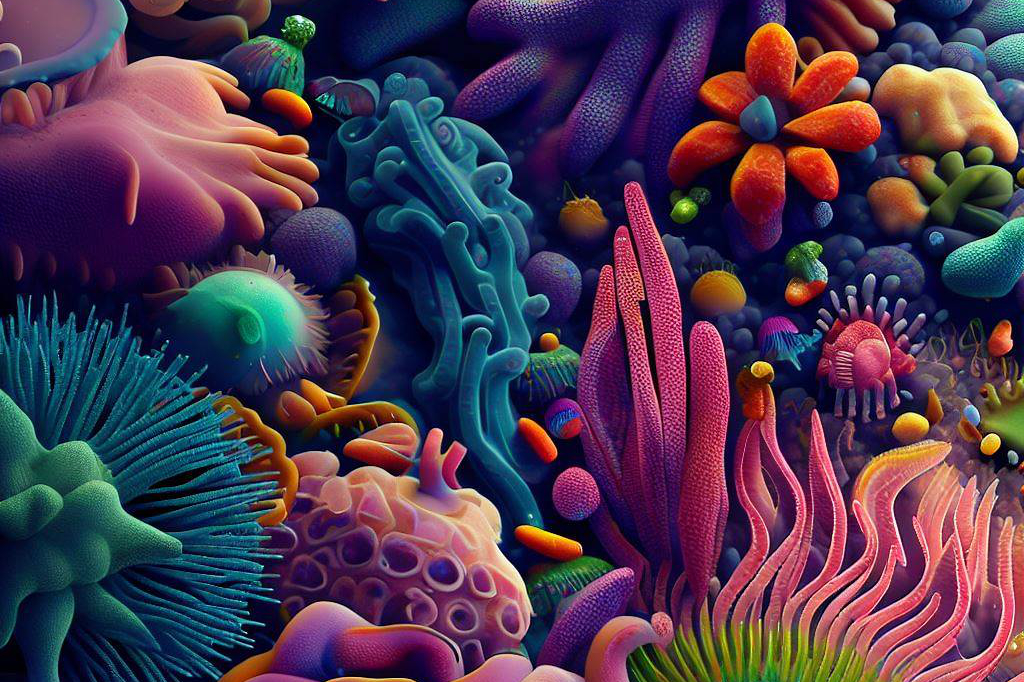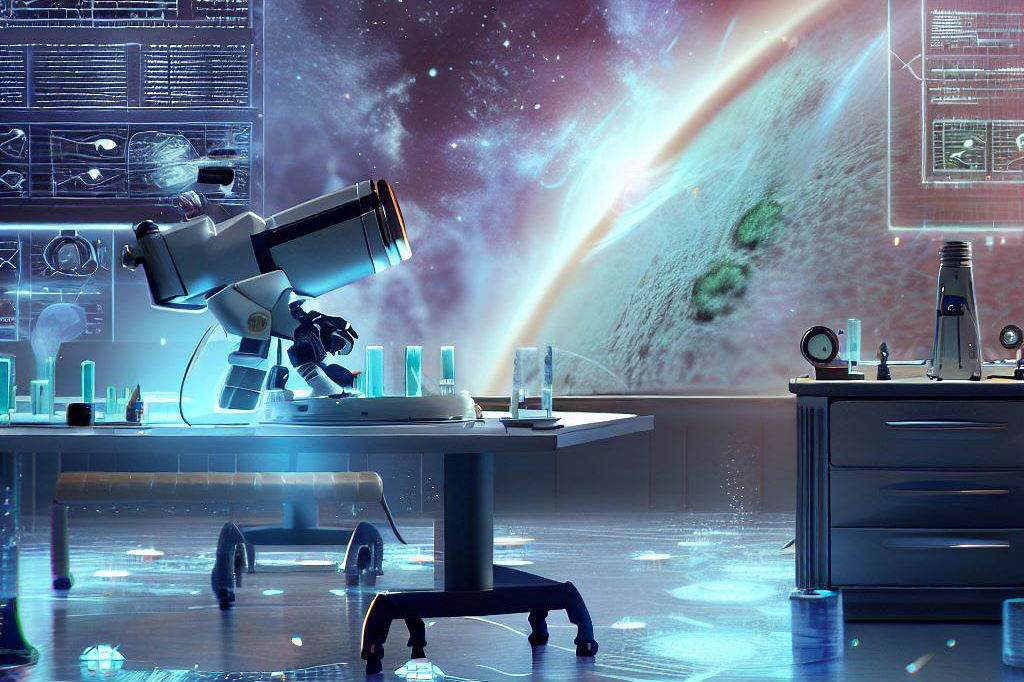The Extreme Survivors: Introducing Extremophiles
The universe is big, really big. So, it’s not hard to imagine that somewhere, out there in the vast expanse of space, there might be other forms of life.
However, we have yet to find any concrete evidence for this hypothesis. That is why astrobiology research is so important – it seeks to answer one of the most fundamental questions we can ask: are we alone in the universe?
One area of study within astrobiology that has been gaining attention in recent years is extremophiles. These organisms are called extreme because they have adapted to survive in some of Earth’s harshest environments – places where most other lifeforms cannot thrive or even survive.
They can live in boiling mud pits, at the bottom of the ocean where sunlight cannot penetrate and temperatures reach freezing points or under a layer of salt crystals. Studying extremophiles has become increasingly relevant as scientists search for clues about how life could exist beyond our planet.
After all, if these organisms can survive in such inhospitable environments on Earth, then perhaps they could thrive on other planets too. All forms of life on earth share a common ancestor, and if some branches have developed mechanisms to resist otherwise lethal environmental conditions, it means that similar mechanisms could exist elsewhere too.
The Importance of Studying Extremophiles

Extremophiles may seem like just an interesting curiosity at first glance, but studying them has profound implications for understanding not just our universe but also ourselves. Life as we know it is based on specific chemical reactions and structural characteristics which make certain conditions necessary for existence i.e suitable temperature range, availability of water etc.
By studying extremophile adaptations and survival strategies, scientists hope to broaden their understanding of what types of physical and chemical conditions are necessary (or unnecessary) for life’s existence elsewhere than Earth. For example; microbes found in the hot springs of Yellowstone National Park thrive in temperatures exceeding 70°C while those in the depths of the ocean live on toxic substances such as methane and sulfur.
Studying how these organisms are able to survive, and even thrive, in such extreme environments can provide insights into what types of conditions might be suitable for life elsewhere. While there is yet to be evidence of life beyond Earth, studying extremophiles provides a roadmap for future exploration.
If we can understand the limits and adaptations of life on Earth, we could develop new strategies for identifying extraterrestrial lifeforms and their habitats. It could also inform us about the kinds of environments that may offer potential for human colonization or at least provide insight into developing habitable biospheres elsewhere within our solar system or beyond.
Types of Extremophiles
Overview of different types of extremophiles

Extremophiles are organisms that thrive in extreme environments that would be fatal to most other forms of life. There are many different types of extremophiles, each adapted to a specific type of extreme environment.
One common type is thermophiles, which can survive at temperatures above 45°C and even up to 80°C.
Another type is halophiles, which can tolerate high levels of salt and live in areas like salt flats.
Acidophilic extremophiles thrive in acidic environments, such as volcanic hot springs or acid mine drainage sites.
Other types include barophilic (pressure-loving) extremophiles found at the bottom of the ocean where pressure is immense, and cryophilic (cold-loving) extremophiles that thrive at temperatures below freezing point.
Characteristics that allow them to survive in extreme environments
Extremophiles have unique characteristics that enable them to live in harsh conditions. For example, thermophilic bacteria have heat-resistant enzymes, which enable them to carry out essential processes like DNA replication and protein synthesis at high temperatures without denaturing or breaking down.
Halophilic bacteria possess a unique metabolic system called “halorhodopsin” which uses light energy to pump protons outward from the cell membrane. This generates an electrical potential difference across the cell membrane, which helps maintain cellular integrity at high salt concentrations.
Acidophilic microbes secrete acid-resistant proteins and polyamines for pH stabilization, while barophilic organisms have modified cell walls with lipids that remain fluid under high pressure.
Overall, these unique adaptations allow extremophile organisms to function efficiently under conditions considered extremely hostile by most other life forms on Earth.
The Significance of Extremophile Research
Through studying these unusual creatures, scientists have learned much about the limits of life and how organisms adapt to extreme environments. The search for extremophiles has expanded the boundaries of what we previously thought was habitable.
Extremophile research also has significant implications for astrobiology, as it helps us better understand the potential for life beyond Earth. By studying these organisms, we can identify key biochemical pathways and adaptations that may be instrumental in facilitating extraterrestrial life.
In addition, the enzymes and proteins produced by extremophiles have numerous practical applications in biotechnology, including medicine and environmental cleanup efforts. By exploring these unique creatures, we may uncover innovative solutions to problems that previously seemed insurmountable.
Extremophile Habitats

The Uninhabitable, Habitable Worlds
When we talk about extremophiles, we typically think of organisms living in extreme environments like deep-sea hydrothermal vents, salt flats, or acidic hot springs. These environments are considered uninhabitable for most life forms due to their extreme conditions, such as high temperature, salinity, or acidity. However, the existence of extremophiles in these environments has challenged our perception of what is considered habitable.
Deep-Sea Hydrothermal Vents
One of the most fascinating habitats for extremophiles are deep-sea hydrothermal vents. The conditions here are incredibly harsh, with temperatures reaching up to 400°C and pressure exceeding 100 times that at sea level.
Despite these conditions, diverse communities of organisms have been discovered here, including giant tube worms and carnivorous snails. These organisms have adapted to the environment by developing symbiotic relationships with chemosynthetic bacteria that use chemicals from the vent fluid to produce energy.
Salt Flats and Acidic Hot Springs
Other extreme habitats where extremophiles thrive include salt flats and acidic hot springs. Salt flats can be found in areas like Death Valley, California, where temperatures can reach up to 56°C and salinity levels can exceed 30%. Halophilic bacteria have adapted to these conditions by accumulating minerals inside their cells, which allow them to survive in high salinity environments.
Acidic hot springs are another habitat where extremophiles thrive due to their pH levels below 5.0. Organisms such as acidophilic Archaea and Bacteria have developed specialized enzymes that allow them to break down complex molecules at low pH levels.
Exploration Missions and Discoveries
With so much still unknown about these extreme habitats, scientists continue exploring them to uncover new discoveries about extremophiles. In 1977, scientists discovered the first hydrothermal vent and later in 2011, they discovered a new species of extremophile bacteria in Antarctica that is capable of surviving temperatures as low as -20°C.
In addition to these discoveries, exploration missions have also opened up possibilities for their applications in astrobiology research and other fields. For instance, some extremophile enzymes have shown potential uses in industrial biochemistry, including the production of detergents and synthetic fibers.
Overall, the study of extremophiles has revealed just how resilient life can be, even under seemingly uninhabitable conditions. By exploring these habitats further and studying their unique adaptations to extreme environments, we may gain valuable insights into the possibility of life beyond Earth.
Astrobiology Applications

Seeking life beyond Earth
Extremophiles have been a source of fascination for astrobiologists, who are interested in understanding the conditions necessary for life to thrive in extreme environments. By studying how extremophiles adapt and survive in these conditions, scientists can gain insights into how life may have evolved on other planets or moons in our solar system or beyond.
For instance, some scientists believe that hydrothermal vents on Jupiter’s moon Europa could harbor extremophile organisms similar to those found on Earth. This potential discovery is not only scientifically exciting but also has far-reaching implications for our understanding of the universe and our place within it.
Developing sustainable life-support systems
Another promising application of extremophile research is the development of sustainable life-support systems for space exploration. Due to their unique adaptations to extreme environments, extremophiles offer a wealth of knowledge about how living organisms can survive in hostile conditions that are unsuitable for humans.
For example, there are certain species of bacteria that can survive in highly acidic environments by producing enzymes that allow them to break down harmful toxins into harmless substances. These enzymes could be used to develop filters that remove harmful chemicals from spacecraft air and water supplies.
Examples of Extreme Adaptations
Studying the adaptations of extremophiles has led to some fascinating discoveries with practical applications here on Earth. For instance, researchers have identified an enzyme from a type of bacterium found in hot springs that is capable of breaking down cellulose – a substance found in plant cells – into simple sugars. This enzyme could be used in biofuel production as an alternative energy source to fossil fuels.
Additionally, certain types of bacteria found deep beneath Antarctic ice sheets produce proteins that can withstand extreme cold temperatures without losing their function – this property has led researchers to investigate how these proteins could be used to preserve food and medicine in extreme cold storage.
All in all, the study of extremophiles is a fascinating and rapidly evolving field with many exciting possibilities for astrobiology research, space exploration, and biotechnology applications.
Future Research

Ongoing studies on extremophile genetics and biochemistry to better understand their survival mechanisms
Extremophiles are fascinating organisms that have adapted to thrive in environments most living creatures couldn’t survive in. They have evolved unique genetic and biochemical mechanisms that allow them to live in conditions like high temperatures, acidity, or salinity. Scientists have been studying these organisms to understand how they can withstand such extreme conditions.
One ongoing area of research is the genetics of extremophiles. By studying the genes of organisms that thrive in extreme conditions, scientists can identify key adaptations that allow these species to survive where others cannot.
This knowledge is being used to develop ways to engineer crops that can grow in drought-prone areas or create new enzymes for industrial applications. In addition, researchers are also exploring the unique biochemical pathways used by extremophiles.
These organisms often produce enzymes and proteins with unusual properties that could have important biotech applications. By understanding how these molecules work, researchers hope to exploit them for a variety of purposes, like creating new drugs or developing more efficient biofuels.
Potential for discovering new biotechnological applications from extremophile enzymes and proteins
Another promising area of research is focused on using the enzymes and proteins produced by extremophiles for a variety of industrial applications. These include everything from bioremediation (using microbes to clean up environmental pollutants) to creating new food additives or detergents.
One example of a successful application has been the discovery of Taq polymerase, an enzyme isolated from bacterium found living in hot springs. Scientists use this enzyme extensively today as a tool for amplifying DNA sequences in molecular biology research – an essential technique used widely across many different disciplines.
Other promising areas of study include developing new vaccines using proteins derived from thermophilic bacteria or using proteases sourced from halophilic bacteria as low-temperature laundry detergents.
The potential applications are vast, and the unique properties of extremophile enzymes and proteins offer a rich source of inspiration for researchers.
Extremophiles are an essential resource for scientific research, providing insights into the evolution of life on Earth and offering new opportunities for biotech applications. The continued study of these organisms will undoubtedly yield even more exciting discoveries in the future.
Final Thoughts on Potential Breakthroughs That Could Come from Continued Research
It is an exciting time for astrobiology research, as continued study of extremophiles has already yielded fascinating results. The discovery of microorganisms that are able to survive without oxygen and under extreme heat or pressure opens up new possibilities that were previously thought impossible. Furthermore, advances in biotechnology made possible by this research have implications not just for exploration but also for human health.
With so much still left unexplored, one can only imagine what we may discover with further study of these remarkable organisms. It is important to continue researching extremophiles and their potential contributions to human knowledge; not just about whether there is extraterrestrial life out there but also about how we might live more sustainably on Earth.
While it may seem strange to some people that researchers would focus on such unusual organisms as extremophiles when searching for answers about alien life forms or developing solutions related to space travel and resource management, those that do so recognize their importance in shaping a future that is sustainable for all of us. It is only through continued study and exploration of these organisms that we will gain a deeper understanding of our place in the universe and pave the way for a brighter future.
FAQ: The Intriguing Role of Extremophiles in Astrobiology Research
Q1: What is astrobiology research?
A1: Astrobiology research is a scientific field that focuses on studying the origin, evolution, and distribution of life in the universe. It encompasses various disciplines such as biology, chemistry, physics, and astronomy to understand the possibility of life beyond Earth.
Q2: What are extremophiles?
A2: Extremophiles are microorganisms that thrive and survive in extreme environmental conditions that are inhospitable to most life forms. These conditions include high temperatures, acidic or alkaline environments, high pressure, high radiation, and a lack of oxygen.
Q3: What role do extremophiles play in astrobiology research?
A3: Extremophiles are of great interest to astrobiology researchers because they provide valuable insights into the limits of life on Earth and the potential for life elsewhere in the universe. By studying extremophiles, scientists can better understand the conditions under which life can exist and adapt, which helps in the search for extraterrestrial life.
Q4: How do extremophiles survive in extreme environments?
A4: Extremophiles have developed unique adaptations that allow them to survive in extreme environments. For example, some extremophiles produce heat-resistant proteins that protect their cellular machinery from high temperatures. Others have evolved mechanisms to repair DNA damage caused by radiation or adapt to highly acidic or alkaline conditions.
Q5: What are the different types of extremophiles?
A5: Extremophiles can be classified into several categories based on the extreme conditions in which they thrive. Some common types include:
– Thermophiles: These are extremophiles that thrive in high-temperature environments, such as hydrothermal vents on the ocean floor or hot springs.
– Acidophiles: Acidophiles are extremophiles that can survive and grow in highly acidic conditions, such as acidic lakes or sulfuric acid pools.
– Alkaliphiles: Alkaliphiles are extremophiles that can tolerate and thrive in alkaline environments with high pH levels.
– Halophiles: Halophiles are extremophiles that live in highly saline environments, such as salt flats or salt lakes.
– Psychrophiles: Psychrophiles are extremophiles that can survive and even thrive in extremely cold temperatures, such as polar regions or deep-sea trenches.
These different types of extremophiles provide valuable clues about the diversity of life on Earth and the potential habitability of other planets or moons.
TL;DR …
– 🌌 Astrobiology research is a scientific field that investigates the origin, evolution, and distribution of life in the universe.
– 🦠 Extremophiles are microorganisms that can survive and thrive in extreme environmental conditions that are inhospitable to most life forms.
– 🔬 Studying extremophiles provides valuable insights into the limits of life on Earth and the potential for life elsewhere in the universe.
– 🌡️ Extremophiles have unique adaptations that enable them to survive in extreme environments, such as producing heat-resistant proteins or repairing DNA damage caused by radiation.
– 🧪 Extremophiles can be categorized into different types based on the extreme conditions in which they flourish, including thermophiles, acidophiles, alkaliphiles, halophiles, and psychrophiles.

C M, a seasoned editor, journalist, and consultant, is deeply fascinated by the convergence of technology, space, and the future of humanity.
With a particular interest in transhumanity, futurology, and the philosophical and ethical dimensions of these domains, C M serves as the lead contributor to SpaceSpotlight and TranscendSphere.
When not penning insightful articles on these rapidly evolving fields, C M indulges in their love for podcasts and books, proudly embracing their status as a ‘Happy Nerd Extraordinaire!’



